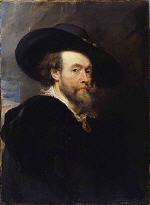
(born June 28, 1577, Siegen, Westphalia — died May 30, 1640, Antwerp, Spanish Neth.) Flemish painter and diplomat. After apprenticeships in Antwerp, he was admitted to its painters' guild in 1598. He went to Italy in 1600 and until 1608 worked for the duke of Mantua, who in 1603 sent him to Spain to present paintings and other gifts to Philip III, the first of many diplomatic missions he would perform for various courts over three decades. The enormous fame he would achieve made him welcome at royal courts, and sovereigns often discussed affairs of state while they sat for portraits. Returning to the Spanish Netherlands (now Belgium) in 1608, he was appointed court painter to the Spanish Habsburg regents, and over the next decade produced numerous altarpieces. A devout Catholic, he became the Counter-Reformation's chief artistic proponent in northern Europe. In 1620 he contracted to design 39 ceiling paintings for the Jesuit church, to be completed by assistants, including the young Anthony Van Dyck. In France he did 21 large canvases for Marie de Médicis and a tapestry cycle for Louis XIII; for Britain his Allegory of Peace and War (1629 – 30) commemorated the success of his own diplomatic efforts to end hostilities between Britain and Spain, and he decorated the royal Banqueting House for Charles I; in Spain he did more than 60 oil sketches for Philip IV's hunting lodge. Both Charles and Philip knighted him. His output was prodigious. He was the greatest exponent of Baroque painting's dynamism, vitality, and sensual exuberance. His profound stylistic influence extended over three centuries.